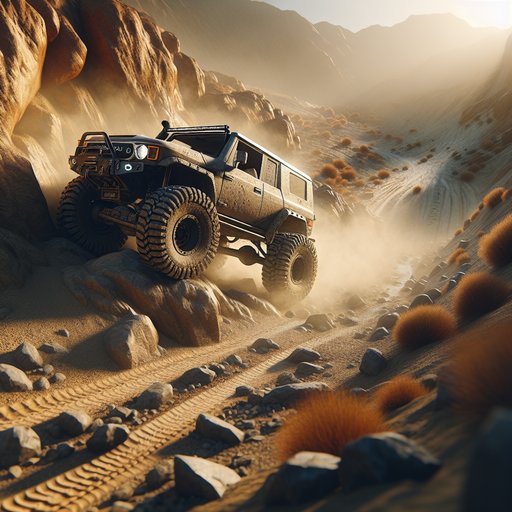
We spent two days evaluating the 2024 Jeep Wrangler Rubicon’s off-road hardware—ground clearance, 4WD systems, and terrain handling—on a varied loop of rocks, sand, mud, and steep grades to see how the numbers translate to real-world confidence and control.
On paper, the Wrangler Rubicon sets the benchmark for factory off-road specs: 10.8 inches of ground clearance, 44.0° approach, 22.9° breakover, and 37.0° departure angles, plus up to 34 inches of water-fording capability. Rubicon’s Rock-Trac 4x4 system features a 4.0:1 low-range, locking Dana 44 axles front and rear, and an electronic front sway-bar disconnect. Our four-door tester rode on 33-inch LT285/70R17 all-terrains and an eight-speed automatic, with factory skid plates guarding the fuel tank and transfer case. Testing covered a 42-mile loop in mixed conditions: a sandstone stair-step climb, loose shale hill with embedded ledges, a rutted forest road after overnight rain, and a soft sand wash.
Ambient temperatures hovered around 82°F. We ran street pressures initially (36 psi), then aired down to 18 psi for the technical sections and sand. Payload included two adults, recovery gear, and a full tank—roughly 4,800 lb as tested. Ground clearance is generous where it matters, but rock height still dictates line choice.
The rear differential pumpkin is the lowest hard point; we tapped the transfer-case skid once at the crest of a sharp breakover, audible but inconsequential. Approach angle let us nose into two-foot ledges without bumper interference, and the high-cut rear bumper kept departure scrapes to a minimum. With tires aired down, the Wrangler crested 11-inch square-edged obstacles without spinning, and ruts up to 12 inches deep never threatened the door sills. The 4WD hardware shines in low-speed control.
In 4L, first gear with the 4.0:1 low range provides a crawl ratio in the mid-70s with the automatic, enabling careful tire placement without excessive throttle. Front and rear lockers engaged quickly and consistently—about a second to lock under light load—and the sway-bar disconnect noticeably improved articulation on offset ledges, keeping all four tires working. Hill Descent Control held a steady 2–3 mph on a 28% grade with predictable modulation and minimal ABS chatter. Terrain handling is composed across surfaces.
On the shale climb, the traction control’s calibration allowed slight wheel slip before intervening, which helps maintain momentum without cutting power abruptly. In sand, 4H with reduced pressures kept the Wrangler floating; we never felt it dig in unless we paused on a soft incline. On washboard, airing down transformed ride quality and steering stability; at 25–30 mph the front end tracked true with fewer skittering moments. Brakes resisted fade on long descents, and we noted no heat-soak issues.
Trail consumption averaged 13–15 mpg. Overall, the Rubicon’s factory package delivers serious capability with little drama. The numbers are real, and the system integration—lockers, low range, articulation—builds confidence for intermediate to advanced trails. For frequent rock work, 35-inch tires and additional skid plating are worthwhile.
If your use case is mostly dirt roads and the occasional obstacle, a lesser trim with all-terrains will suffice, but for technical terrain out of the box, the Rubicon remains the safe bet.












